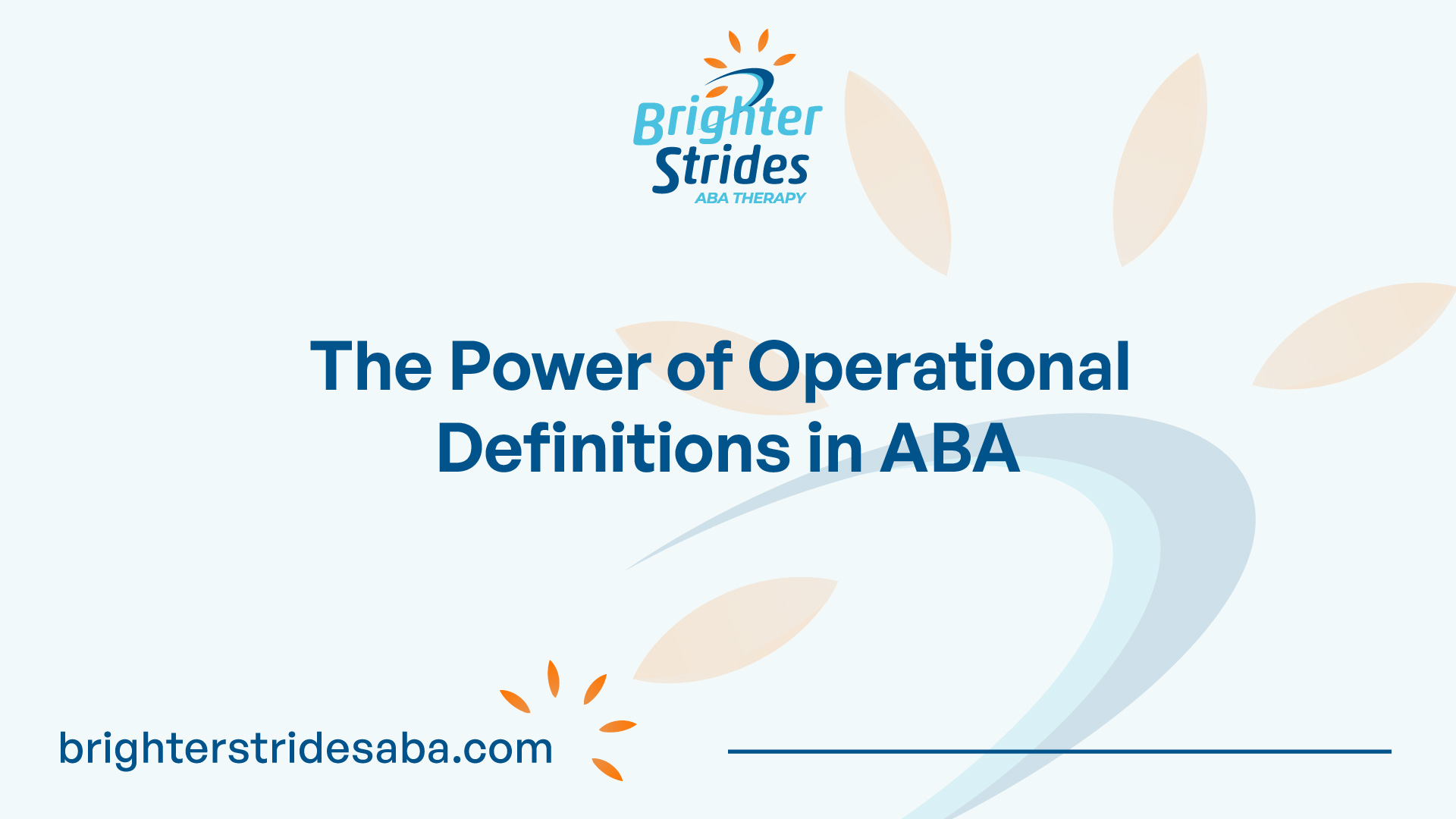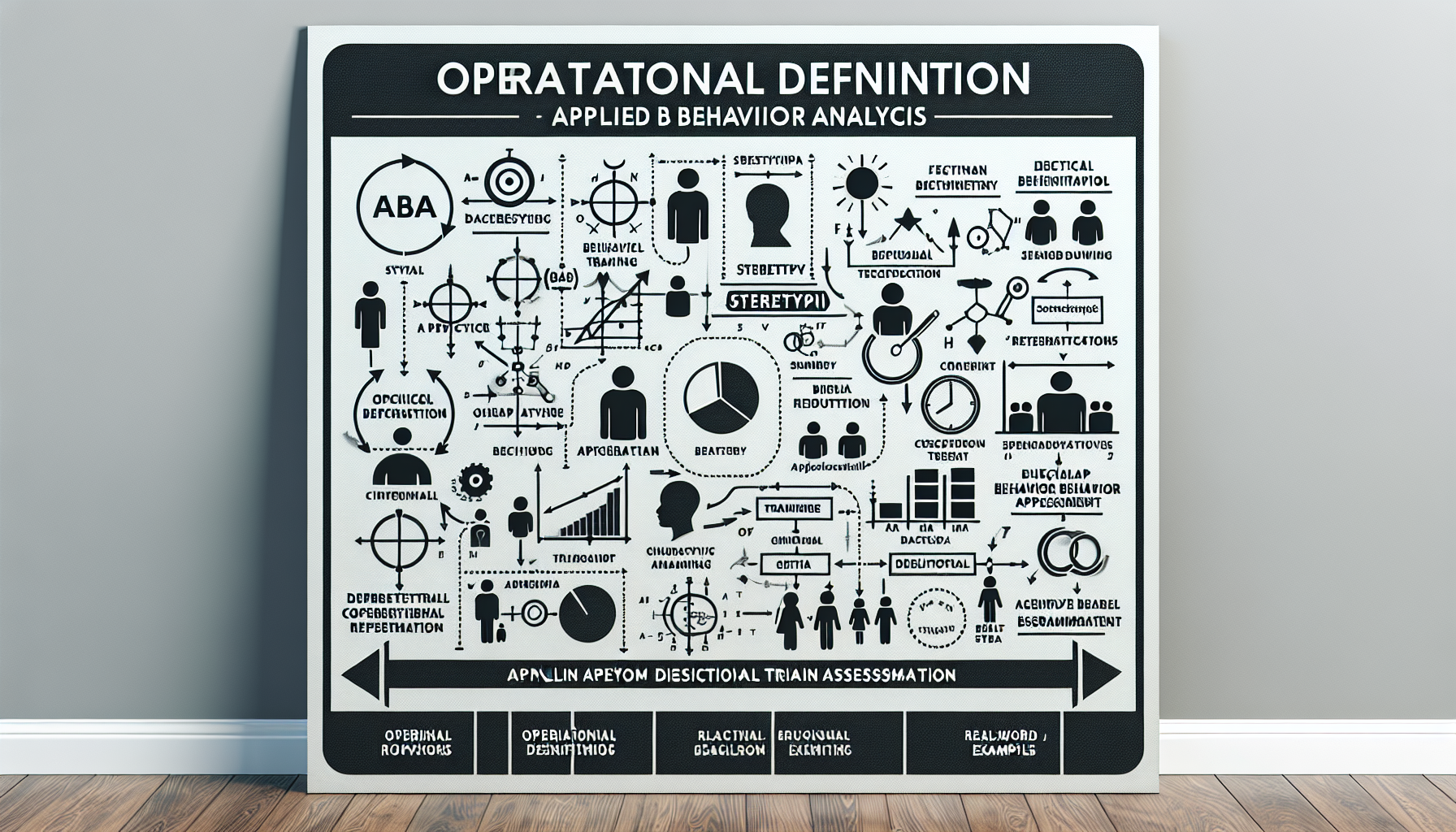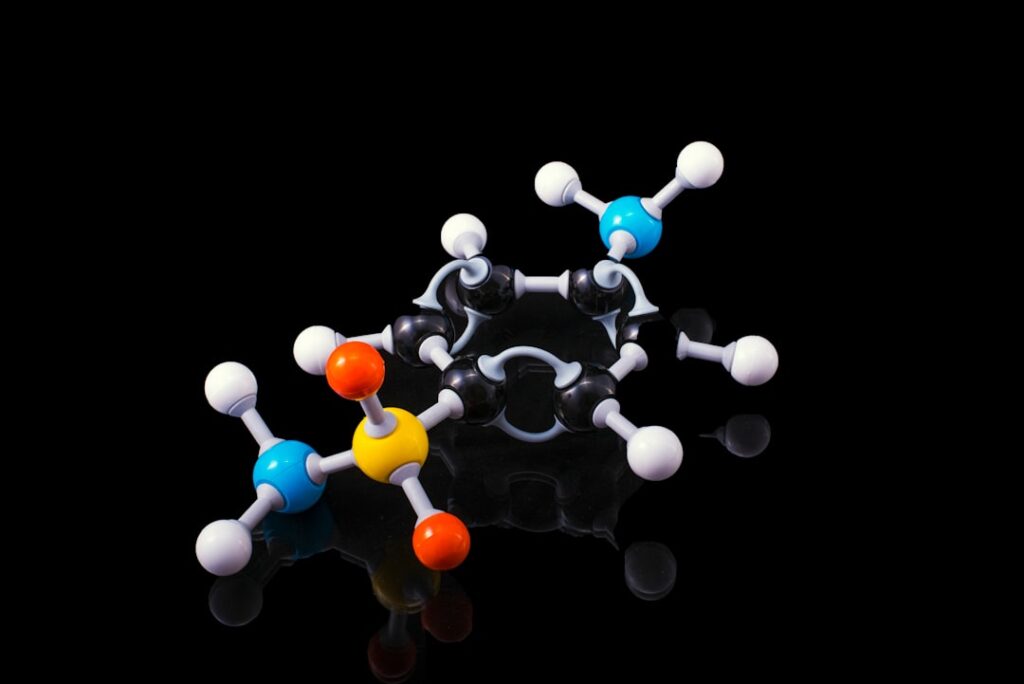Understanding Operational Definitions
Operational definitions play a crucial role in Applied Behavior Analysis (ABA) by providing clear and measurable descriptions of behaviors. These definitions are essential for accurately assessing and analyzing behavior change. In this section, we will explore the definition and importance of operational definitions, as well as provide examples to illustrate their application.

Definition and Importance
Operational definitions in ABA refer to a clear and concise description of a target behavior that is observable and measurable. Unlike vague or subjective definitions, operational definitions provide specific criteria for identifying and quantifying behavior. They help to establish a common understanding among behavior analysts, therapists, and caregivers, ensuring consistency in measurement and evaluation.
The importance of operational definitions lies in their ability to enhance the reliability and validity of data collection. By providing explicit guidelines for defining behaviors, operational definitions reduce ambiguity and ensure that different individuals can accurately identify and measure the same behavior. This consistency is crucial for effective behavior analysis and intervention.
Examples of Operational Definitions
To better understand operational definitions, here are a few examples:
- Hand raising: A behavior where the individual lifts their hand above shoulder level, with fingers extended and palm facing upward, for at least 3 seconds.
- Eye contact: A behavior where the individual looks directly into another person’s eyes for a duration of 2 seconds or more.
- Verbal aggression: A behavior where the individual engages in hostile verbal exchanges, using profanity, threats, or derogatory language towards others.
- On-task behavior: A behavior where the individual remains engaged in the assigned task, without engaging in any off-task behaviors, for a continuous period of at least 5 minutes.
These examples demonstrate how operational definitions provide clear guidelines for identifying and measuring specific behaviors. By using observable and measurable criteria, behavior analysts can collect accurate data and make informed decisions regarding behavior intervention strategies.
Operational definitions are not limited to these examples and can be tailored to specific behaviors and contexts. The key is to ensure that the definitions are clear, specific, and measurable, allowing for consistent and reliable data collection.
Understanding operational definitions is fundamental to the practice of ABA. By using precise and well-defined descriptions of behaviors, behavior analysts can accurately assess behavior change and develop effective intervention strategies. In the following sections, we will explore how operational definitions are applied in ABA therapy and the techniques used for behavior measurement.
Applications in Applied Behavior Analysis
Applied Behavior Analysis (ABA) is a therapeutic approach that utilizes behavioral principles to bring about positive behavior change. Operational definitions play a crucial role in the practice of ABA therapy, helping to ensure clear and consistent measurement of behavior. This section will explore the significance of operational definitions in ABA and the behavior measurement techniques used in this field.
Operational Definitions in ABA Therapy
In ABA therapy, operational definitions are used to precisely and objectively define target behaviors. These definitions provide a clear description of the behavior being targeted, leaving no room for ambiguity or misinterpretation. Operational definitions specify the observable and measurable aspects of a behavior, allowing therapists to collect data and track progress effectively.
By using operational definitions, therapists can establish a common understanding of the target behavior across different individuals involved in the therapy process. This creates consistency in data collection and ensures that everyone is working towards the same goal.
For example, if the target behavior is “increasing eye contact,” the operational definition may include specific criteria such as “the child maintains eye contact with the therapist for at least 3 seconds during a conversation.”
Behavior Measurement Techniques
Behavior measurement is a fundamental aspect of ABA therapy, and various techniques are employed to gather data on target behaviors. These techniques help therapists monitor progress, make informed decisions, and adjust treatment plans accordingly.
Some common behavior measurement techniques used in ABA therapy include:
- Direct Observation: Therapists observe and record the target behavior in real-time. This can be done through structured observations, where specific behaviors are noted at predetermined intervals, or through continuous observations, where all occurrences of the behavior are recorded.
- Event Recording: This technique involves counting the number of times a specific behavior occurs within a given time frame. It is useful for behaviors that have a clear beginning and end, such as hand raising or vocalizations.
- Duration Recording: Duration recording involves measuring the length of time a behavior occurs. This technique is particularly useful for behaviors that have a longer duration, such as tantrums or on-task behavior.
- Interval Recording: Interval recording divides the observation period into smaller time intervals. The therapist records whether or not the behavior occurs within each interval. This technique provides an estimate of the behavior’s occurrence during the observation period.
- ABC Data Collection: ABC data collection involves recording the Antecedent (what happened before the behavior), the Behavior itself, and the Consequence (what happened after the behavior). This approach helps identify patterns and potential triggers for the behavior.
Effective behavior measurement techniques rely heavily on clear and precise operational definitions. These definitions guide the selection and implementation of the appropriate measurement method for each target behavior.
In the field of ABA, operational definitions and behavior measurement techniques work hand in hand to ensure accurate and reliable data collection. By using operational definitions to define target behaviors and employing appropriate measurement techniques, therapists can make data-driven decisions and promote positive behavior change in individuals receiving ABA therapy.
Creating Effective Operational Definitions
When it comes to behavior analysis, creating effective operational definitions is essential for accurate and reliable data collection. By establishing clear and specific definitions, behavior analysts can ensure consistency in their observations and measurements. Let’s explore two key factors to consider when creating operational definitions: clarity and specificity, as well as reliability and validity.
Clarity and Specificity
Clarity and specificity are crucial aspects of creating operational definitions. It is important to define the behavior in a way that is easily understood and leaves no room for ambiguity. A clear definition ensures that different observers can consistently identify and measure the behavior in the same way.
To achieve clarity, the operational definition should provide a detailed description of the behavior of interest. This includes specifying the topography (physical form) of the behavior and any relevant contextual information. For example, instead of defining “aggression” in broad terms, an effective operational definition might specify the behavior as “hitting, kicking, or biting another person with the intention to cause harm.”
Furthermore, operational definitions should be objective and free from subjective interpretations. Avoid using vague terms or subjective phrases that can lead to inconsistent observations. The use of precise language and concrete examples helps to ensure that the operational definition is clear and easily applicable.
Reliability and Validity
Reliability and validity are important considerations when creating operational definitions in applied behavior analysis (ABA). Reliability refers to the consistency and stability of measurements, while validity refers to the accuracy and relevance of the measurements.
To establish reliability, it is crucial to ensure that multiple observers can independently measure the behavior and obtain similar results. This can be achieved by providing clear guidelines and instructions on how to observe and record the behavior. Regular training and interobserver agreement checks can further enhance reliability by minimizing individual differences in observation and interpretation.
Validity, on the other hand, is achieved when the operational definition accurately measures the target behavior of interest. Valid operational definitions align with the theoretical and conceptual frameworks of ABA. They capture the essence of the behavior being studied and allow for meaningful analysis and intervention.
To enhance both reliability and validity, behavior analysts may conduct a functional analysis to determine whether the operational definition accurately captures the function or purpose of the behavior. This analysis helps to ensure that the operational definition aligns with the underlying causes and consequences of the behavior.
By prioritizing clarity, specificity, reliability, and validity in the creation of operational definitions, behavior analysts can establish a solid foundation for accurate data collection and analysis. These definitions serve as the basis for effective behavior measurement, intervention planning, and evaluation in the field of applied behavior analysis.
Implementing Operational Definitions
Once operational definitions have been established, it is essential to implement them effectively to ensure accurate data collection and analysis in Applied Behavior Analysis (ABA). This section will explore the data collection methods commonly used in ABA and the subsequent analysis and interpretation of the collected data.
Data Collection Methods
Data collection is a crucial component of ABA, as it provides the necessary information for monitoring and evaluating behavior change. There are various methods available for collecting data, depending on the specific behavior being targeted and the resources available.
Some commonly used data collection methods in ABA include:
- Direct Observation: This method involves directly observing and recording the target behavior in real-time. It allows for accurate and detailed data collection, providing valuable information about the frequency, duration, and intensity of the behavior.
- Checklists and Rating Scales: Checklists and rating scales are useful tools for collecting data when direct observation may not be feasible. These tools allow for the systematic recording and quantification of behaviors based on predefined criteria.
- Interviews and Surveys: Interviews and surveys can be conducted with individuals who have knowledge of the target behavior, such as parents, teachers, or caregivers. These methods provide valuable insights and subjective information about the behavior, complementing the objective data collected through direct observation.
- Technological Tools: Advancements in technology have introduced innovative ways to collect data in ABA. Video recording and specialized software applications can be utilized to capture and analyze behavior, providing a comprehensive and accurate record of the target behavior.
Data Analysis and Interpretation
Once data has been collected, it needs to be analyzed and interpreted to gain meaningful insights and inform decision-making in ABA. The analysis process involves organizing and summarizing the data, identifying patterns and trends, and evaluating the effectiveness of interventions.
Common techniques used for data analysis in ABA include:
- Visual Analysis: Visual analysis involves graphing the collected data to visually represent the behavior over time. Graphs allow for the identification of trends, patterns, and changes in behavior, making it easier to evaluate progress and determine the effectiveness of interventions.
- Descriptive Statistics: Descriptive statistics, such as measures of central tendency (e.g., mean, median) and variability (e.g., range, standard deviation), can be used to summarize and quantify the data. These statistics provide a clear understanding of the behavior’s characteristics and help in making informed decisions.
- Comparative Analysis: Comparative analysis involves comparing the target behavior’s data with baseline data or data from different interventions. This analysis helps determine the effectiveness of specific interventions by examining the differences in behavior across different conditions.
- Statistical Analysis: In some cases, more advanced statistical analysis techniques may be employed to further analyze the data. These techniques can provide more in-depth insights, such as determining the statistical significance of behavior changes or identifying correlations between variables.
By utilizing appropriate data collection methods and employing systematic data analysis techniques, ABA practitioners can gain a comprehensive understanding of the behavior being targeted. This knowledge enables them to make informed decisions, modify interventions as necessary, and track progress effectively.
Challenges and Considerations
As with any methodology, the use of operational definitions in applied behavior analysis (ABA) comes with its own set of challenges and considerations. In order to ensure accurate and reliable data collection, it is important to be aware of common pitfalls and be prepared to adjust definitions for accuracy.
Common Pitfalls
When utilizing operational definitions in ABA, there are some common pitfalls to be mindful of. These include:
- Lack of Clarity: Operational definitions must be clear and specific to accurately capture the behavior being measured. Vague or ambiguous definitions can lead to inconsistent data collection and interpretation.
- Observer Bias: The presence of observer bias can impact the accuracy and reliability of data collected. It is important for observers to be trained and have a clear understanding of the operational definitions to minimize bias.
- Interobserver Reliability: When multiple observers are involved in data collection, achieving consistent results can be challenging. Interobserver reliability refers to the degree of agreement between different observers. It is crucial to establish protocols and provide ongoing training to ensure consistency.
- Variable Definitions: In some cases, operational definitions may vary across different practitioners or studies. This can lead to discrepancies in data interpretation and comparison. Standardization of definitions within the field of ABA is important to ensure consistency and enhance the validity of findings.
Adjusting Definitions for Accuracy
To address the challenges and pitfalls associated with operational definitions, it may be necessary to adjust definitions for accuracy. This can be done through the following considerations:
- Continuous Monitoring: Regularly monitoring the data collection process is essential to identify any issues or inconsistencies in the operational definitions. This allows for timely adjustments and ensures accurate measurement of the target behavior.
- Collaboration and Feedback: Encouraging collaboration and open communication among practitioners and observers can help identify areas for improvement and refine operational definitions. Feedback from different perspectives can contribute to the accuracy and reliability of the data collected.
- Ongoing Training: Providing ongoing training and professional development opportunities for practitioners and observers can enhance their understanding of operational definitions and improve the consistency and accuracy of data collection.
- Refinement and Revision: As new research and evidence emerge, it may be necessary to refine and revise operational definitions to align with the latest knowledge and best practices in the field of ABA. Staying informed about advancements in the field can help ensure the accuracy and relevance of operational definitions.
By being aware of common pitfalls and actively addressing them through adjustments, ABA practitioners can enhance the accuracy and reliability of data collected using operational definitions. This, in turn, contributes to the effectiveness and validity of ABA interventions and supports the overall goals of behavior change.

 We've just released an article!
Check out our blog!
We've just released an article!
Check out our blog!



